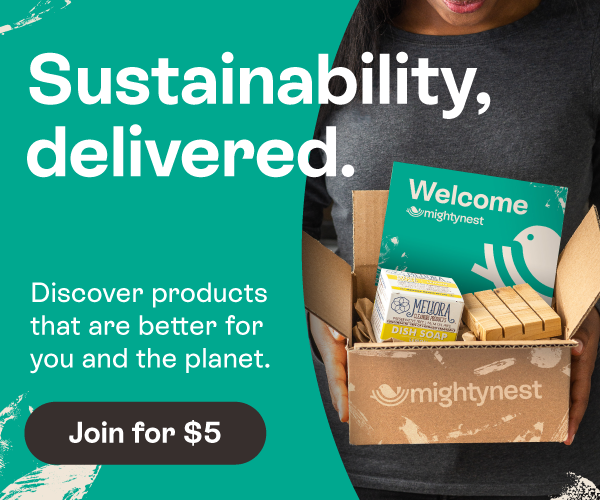Packing a waste-free lunch for your child has long lasting benefits--both for your child's understanding of environmental awareness, her/his health and for the sake of our planet's health. In fact, many schools are now requiring or moving towards requiring that students bring zero waste to school. Besides the obvious perk to the school (cuts down on thousands of $$ in waste management!), this message also sets up a routine that will hopefully manifest itself in less waste beyond school life! “Reduce” and “Reuse” actually provide a much higher return for the environment for the effort expended.
A New York Times article noted that there is momentum towards reducing the amount of packaging we throw out. Sales of paper bags and sandwich bags are on the decline. Between August 2010 and August 2011, sales of plastic sandwich bags declined by 3.17 percent and sales of paper bags fell by 13.19 percent, compared with the same period a year earlier.
When the average school-age child generates 67 pounds of lunch trash per school year, there is certainly room for improvement.
In addition to the reduction of waste, at MightyNest we think it is paramount that products are safe, made without the use of chemicals and are healthy for our homes. So, how to go about making a waste-free lunch with products that are healthy and safe? Here's a guide to simplify and decipher the essential components of a waste-free AND non-toxic lunch gear.
Reusable sandwich wraps: It's time to do away with plastic storage bags when there are healthier options on the market. Especially when an average size family goes through over 500 baggies just for lunches! If you transfer that money spent on throw away plastic bags, you'd be sending your kid to school with a safe, stylish and reusable wrap! Good for you and the planet! We think it is important to select reusable sandwich bags & reusable snack bags that are BPA, PVC, Phthalate and Lead Free. Beyond colors and patterns, you can choose from organic cotton bags, cotton bags with nylon lining, cotton bags that open like a placemat and those that are formed like a pouch. Here are a wide variety of snack and sandwich wraps and a guide to choosing the right one.
Reusable Food Containers: Store and transport lunch foods safely in reusable food containers made of 304 grade stainless steel, tempered glass and silicone. We only select containers that are free of BPA, PVC, Phthalate and Lead free so your food can stay fresh without the possibility of chemicals leaching into the food. By using reusable containers, you'll avoid purchasing individually wrapped snacks. Plastic tupperware eventually becomes cloudy, scratched and degrades, making it more likely to leach chemicals into food. The plastic itself is also difficult and costly to recycle.
Reusable Beverage Bottle: Pre-packaged juice boxes/pouches are an unnecessary component in any lunchbox! By using reusable bottles, you'll avoid purchasing items like juice boxes that cannot be recycled. More importantly, using reusable bottles made of glass or stainless steel also ensures that your child's drink won't be contaminated with BPA or other harmful chemicals. You may even find that your child is more hydrated (helps them to focus in school!) because their drink also stays cool in an insulated bottle! Refer to this guide for more information about reusable bottles for kids.
Thermal Containers: Made from high quality 304 grade stainless steel, insulated food containers will keep healthy foods warm or cool for hours, ensuring against spoiled food. It's important that all containers are BPA free and PVC free and are constructed with double wall interiors for optimal insulation. Perfect for pasta, soups, beans and rice and more.
Insulated Lunchboxes: These lunchboxes are made from heavy duty nylon and recycled plastic bottles, unlike conventional lunchboxes made from vinyl (that means PVC!). A common additive to the vinyl used in lunchboxes is DEHP-- a phthalate that is a suspected carcinogen and reproductive toxicant. Another concern is the possibility that common soft plastic lunchboxes can contain lead. Even low levels of lead exposure can result in reduced IQ, learning disabilities and stunted growth. We only select lunchboxes that are PVC Free, Phthalate Free, BPA Free and Lead Free and would recommend the same for your family.
Extras--Reusable Utensils, Napkins + Ice packs: Waste also happens in the details. Items like plastic utensils and paper towels are easy but disposable, adding quite a bit of waste to the landfills. Plastic utensils are typically made of styrene, a chemical in polystyrene plastics. Styrene is a known carcinogen and is prone to leach into hot foods and those with a hight fat content. In addition to being an endocrine disruptor, prolonged exposure to styrene has been found to be toxic to the brain and nervous system. Bamboo or stainless steel are favorable and safe non-plastic choices for eating utensils.
Why not start the habit of using cloth napkins as well and avoid the consumption of paper towels? Choosing organic cotton napkins with low impact dyes will help to cut down on the environmental impact of making and decomposing paper towels.
Need a little extra chill? Keep your lunch colder for even longer with a sweat-free, BPA,PVC and lead free ice pack--made from recycled plastic bottles!
What foods do your kids like packed for school lunch?


